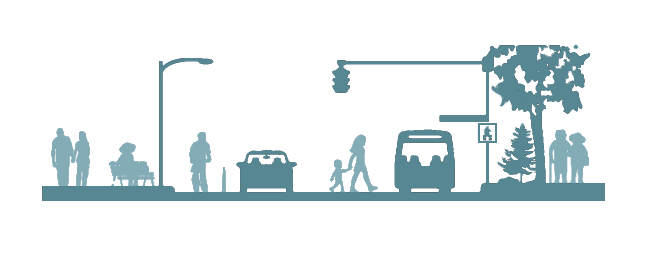Multimodal Transition PLAN

A plan that aims to help everyone access Santa Fe by public transit, walking, bicycling and parking.
The multimodal transition plan developed strategies to increase access to the City of Santa Fe via public transit, walking, bicycling, and parking management in order to reach equity, environmental, social, and health goals.
The strategy included a broad public outreach that aimed to collect input from the people who benefit from changes to our transportation system, those whose access to city assets could be improved, and those whose business could gain from increased visitation or an increase in employee access.
Thank you for taking our survey, read the results in the final plan!
If you have students in the Santa Fe Public School system, make sure to look for involvement opportunities with Safe Routes To School Events such as walk and roll to school day. This gives you an opportunity to try out pedestrian infrastructure near your school locations, which will give you insight on some of the issues.
And if you want to stay abreast of transportation announcements in Santa Fe, sign up for the Santa Fe Metropolitan Planning Organization’s Newsletter.
The general survey was analyzed and results are summarized in the plan, and found in more detail in the appendices.
There have been multiple efforts in the recent past that have also garnered feedback. These were reviewed and are summarized here.
A survey of nearly 4,000 visitors to the area found that most walked to get around Santa Fe, this in addition to or in lieu of a private automobile. Still, 415 of these used a city provided bus or shuttle, and many road a bike during their stay. Convenience and travel time of buses seems to be a large factor in visitor travel choice, and nearly half of those surveyed would be willing to take a bus if the public transit service was improved. However, sidewalks may also need to be improved to encourage more visitors to walk. Read the visitor survey summary.
These areas were selected because they contain representative transportation-based issues that are seen all over Santa Fe. Ultimately, the plan aims to address a multi-modal transition everywhere in the city, but uses these locations for specific planning examples.
FocusAreasUpdated6 Ways to understand Multi-modal Planning
Your input is essential!
Please check back to follow the documents movments through city commitees.
Always feel free to contact us with any additional comments or questions to
Leah Yngve, SFMPO planner:
Phone: (505) 955-6614